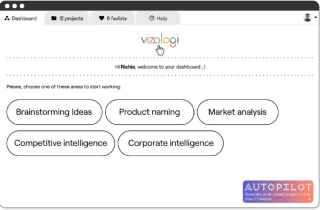How Mobile App Testing Is Evolving With Real User Metrics
In today’s mobile-first world, user experience is the true measure of app success. Performance, usability, and reliability now carry as much weight as core functionality. As a result, quality assurance (QA) teams are moving beyond traditional test metrics like pass/fail rates and defect counts. The new focus? Real user metrics ,data that reflects how actual users experience an app in the real world,often measured through indicators like the Mean Opinion Score (MOS)
This shift is transforming how mobile app testing is designed, executed, and analyzed. It brings together testing, analytics, and real-world performance monitoring to ensure that every release delivers a seamless digital experience.
Why Real User Metrics Matter
Traditional mobile testing environments often simulate user behavior through automated scripts. While effective for functional validation, they can miss subtle yet impactful issues such as latency spikes, UI sluggishness, or network-driven slowdowns ,all of which directly affect user satisfaction.
Real user metrics bridge this gap by providing quantifiable insights into how users actually experience the app under varying device conditions, networks, and geographies. These insights reveal more than whether a feature works; they expose how it feels to use.
By combining device data, session analytics, and user interaction patterns, QA teams gain a holistic understanding of app quality. This evolution ensures testing is not just about validation, but about experience optimization.
The Core Metrics Defining Modern Mobile Testing
As app testing evolves, several key real user metrics are now shaping how QA teams measure and improve app performance.
1. Mean Opinion Score (MOS)
Traditionally used in telecommunications to measure perceived voice quality, Mean Opinion Score (MOS) is now being adapted for mobile app performance testing. It reflects the user’s subjective satisfaction with the app’s responsiveness, visual rendering, and overall smoothness.
Using MOS, QA teams can benchmark user experience across devices, OS versions, and network types. A low MOS score indicates issues that might not break functionality but degrade perceived quality ,such as lag during scrolling or delayed content rendering.
This metric allows testers to quantify user perception, linking technical performance data directly to user experience outcomes.
2. Network Performance and Latency Metrics
Real-world users rarely have perfect network conditions. Mobile apps are constantly switching between Wi-Fi, 4G, and 5G networks, which impacts response times and content delivery.
Modern app testing now includes network simulation and real-time monitoring to evaluate how apps behave under fluctuating bandwidth or packet loss. Metrics like latency, jitter, and data throughput reveal how efficiently the app maintains performance during transitions.
Testing across these conditions ensures that apps perform reliably everywhere, from dense urban 5G zones to low-connectivity regions, strengthening overall usability.
3. Rendering Time and UI Responsiveness
App users expect instant feedback. Even a one-second delay in response can impact engagement and retention. Real user monitoring tools now track time to first interaction, frame rendering rate, and UI thread blocking time to identify visual or interactive lag.
By correlating these with user journey data, testers can pinpoint precisely where performance dips occur, whether in animation-heavy screens, API calls, or UI transitions, and prioritize optimizations for the most critical user flows.
4. Crash Frequency and Stability Index
While crash logs are not new, modern testing correlates crash data with real user behavior and conditions. Instead of only logging crash counts, QA teams now analyze device context, OS versions, memory load, and concurrent app usage to understand the causes behind instability.
Real user metrics help differentiate between isolated test failures and actual user-impacting issues, ensuring teams focus on what truly matters for experience quality.
5. Battery, CPU, and Memory Consumption
Performance isn’t just about speed; it’s about efficiency. High battery drain or memory usage can cause users to abandon apps quickly. Real user metrics track energy consumption, CPU load, and resource usage during typical app sessions.
This helps teams balance performance with sustainability, ensuring apps deliver great experiences without straining the user’s device.
How AI and Automation Are Enhancing Real User Testing
With app complexity rising, integrating AI-driven automation into testing workflows has become critical. AI models can analyze large volumes of user session data to detect performance anomalies, predict future failures, and automatically adjust test coverage.
Autonomous testing agents, an evolution of traditional automation, can replicate real-world conditions dynamically, mimicking human-like interactions such as scrolling, typing, and navigating. This ensures realistic behavior modeling and continuous learning from past sessions.
The debate of Selenium vs Playwright also extends here. While Selenium remains a reliable choice for web-based testing, Playwright’s ability to simulate multiple devices and contexts in one session makes it ideal for cross-platform scenarios. Many enterprises are now combining both for a unified testing strategy that supports mobile, web, and hybrid environments, especially in large-scale enterprise application testing frameworks.
Integrating Real User Data Into the Testing Pipeline
In modern CI/CD environments, static test reports are insufficient. Teams are embedding real user metrics directly into their pipelines for continuous visibility.
For example:
- Shift-left testing ensures real-world user metrics influence development decisions from the earliest stages.
- Shift-right testing uses post-deployment data, including latency, crashes, and MOS, to continuously validate live performance.
- Feedback loops connect both ends, ensuring that insights from production users refine test cases for future releases.
This integration aligns QA goals with tangible business outcomes, driving user satisfaction and operational efficiency.
Real User Metrics in Action: Transforming QA and Development Collaboration
One of the most important outcomes of adopting real user metrics is the alignment between QA and development teams. Instead of working in silos, teams now share unified dashboards that combine performance analytics, network data, and user insights.
This shared visibility helps prioritize fixes that deliver tangible experience improvements rather than focusing solely on functional completeness. It also enables developers to reproduce real-world scenarios, such as testing how an app behaves in poor 4G conditions or under CPU-heavy background operations,t o ensure true reliability.
By bridging data-driven insights and engineering action, organizations move toward experience-centric quality assurance, where success is measured by what users actually feel.
Facing the Future: Experience-First Mobile Testing
The evolution of mobile app testing reflects a broader industry trend ,a move from functional validation to experience assurance. Real user metrics are the bridge that connects testing precision with customer satisfaction.
In the coming years, the most successful QA strategies will combine AI-driven automation, real device testing, and continuous performance analytics. This approach ensures that every release not only passes internal checks but also performs flawlessly in users’ hands across every device, network, and geography.
How HeadSpin Helps Deliver Experience-Driven Mobile App Testing
HeadSpin empowers enterprises to test mobile applications under real user conditions across thousands of devices, networks, and global locations. By integrating AI-powered insights, real device performance metrics, and Mean Opinion Score (MOS) evaluation, HeadSpin enables teams to measure and optimize real-world app experiences. Its advanced analytics capabilities help organizations go beyond traditional pass/fail results, identifying latency issues, visual regressions, and performance bottlenecks that directly impact users. Whether you’re comparing Selenium vs Playwright for automation or scaling enterprise application testing, HeadSpin’s platform provides actionable insights that help QA and development teams deliver exceptional app performance and user satisfaction.

Vizologi is a revolutionary AI-generated business strategy tool that offers its users access to advanced features to create and refine start-up ideas quickly.
It generates limitless business ideas, gains insights on markets and competitors, and automates business plan creation.


